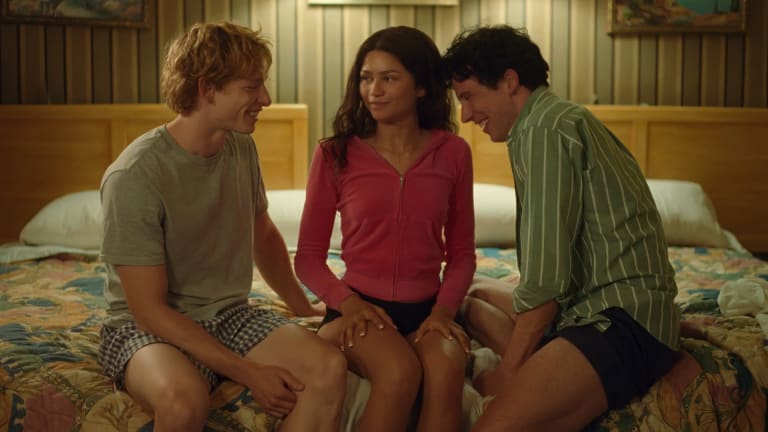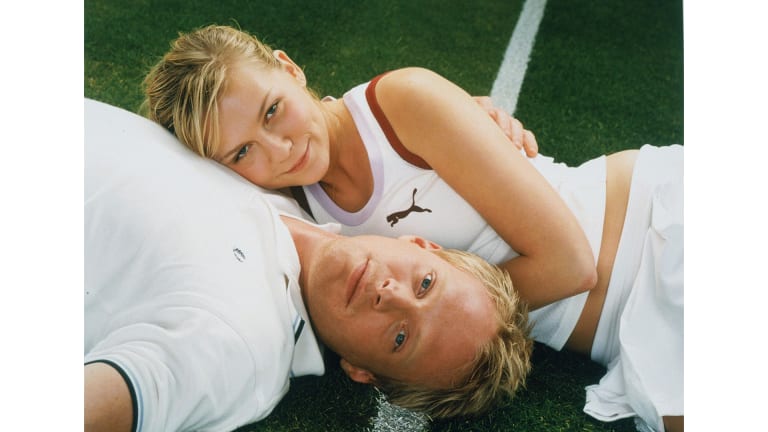Warning: This story has plot spoilers for Challengers (2024).
Given the ample doses of existential dread faced by each of the three protagonists in Challengers, Hollywood’s latest tennis-centric feature film, perhaps a better title for the movie would have been Challenges.
Over the course of 131 fast-paced, time-jumping minutes, a three-sided romance takes place between a trio of skilled tennis players who even when they appear to be enjoying themselves are also constantly staring down their demons. Think of Challengers as a high-octane, emotional challenge match, at one level contested between this troika, at another a battle between self and self. Add in romance. But don’t you dare call Challengers a romantic comedy. As one character who frequently deploys profanity might say, “No effing way.”



